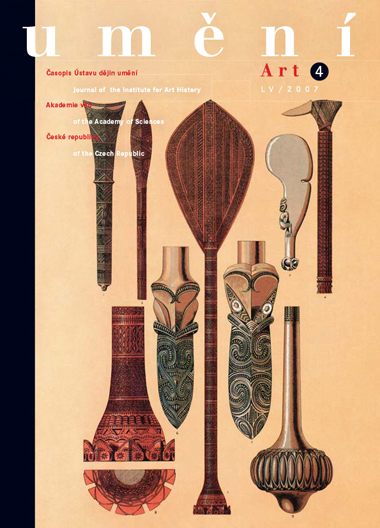Eva Bendová
Bohumila Kubišty. Jeden z mnoha pohledů
Bohumil Kubišta painted his well-known picture Kavárna (The Café) in 1910 during a stay in Paris. The author intended it as a public presentation of the principles of his work at the time - the synthesis of perceived phenomena of contemporary life and the forms of classic artistic expression. Hitherto this painting has been interpreted in the context of the painter's broader artistic direction, specifically his expressive and symbolic treatment of colour and composition. Yet another point of view is possible, one starting from the phenomenon of the café as such, comprehensively grasped by Kubišta. This view is supported by sketches from his Paris sketchbook, for example. We come to the conclusion that an important role in his thinking was played by a strategy of viewpoint regimes - the identification of the role of viewer of the painting, the role of visitor to a real café, the role of café customer on the boundary and in the centre of events. On the basis of texts of the period we see that the café can be understood as a specific place of visual communication where - in the real coffee house situation - space is wholly the domain of glances. The specific features of the café and concepts taken from reception theories and the theory of "gaze" are brought together here. In the painting Kubišta consciously reverses the gaze regime: the viewer becomes the person entering the café, finding himself on the fringe of events into which he is drawn by the view by which the café depicted in the sketches had been characterised before. For Kubišta the initial inspiration was the woman-courtisan, a typical figure of the Café d´Harcout. By inserting the decision-making gaze of such a woman between the main figures in the scene Kubišta emphasises the aspect of free choice with all the social consequences. The scene is not just spectacle as in the case of contemporary representations of the same coffee house or contemporary illustration, it has a moral accent: it is the synthesis of modern society and its social critique.
Full-text in the Digital Library of the Czech Academy of Sciences:
https://kramerius.lib.cas.cz/uuid/uuid:73b86b7f-31bd-49d2-b357-8a65082e819d
< back

